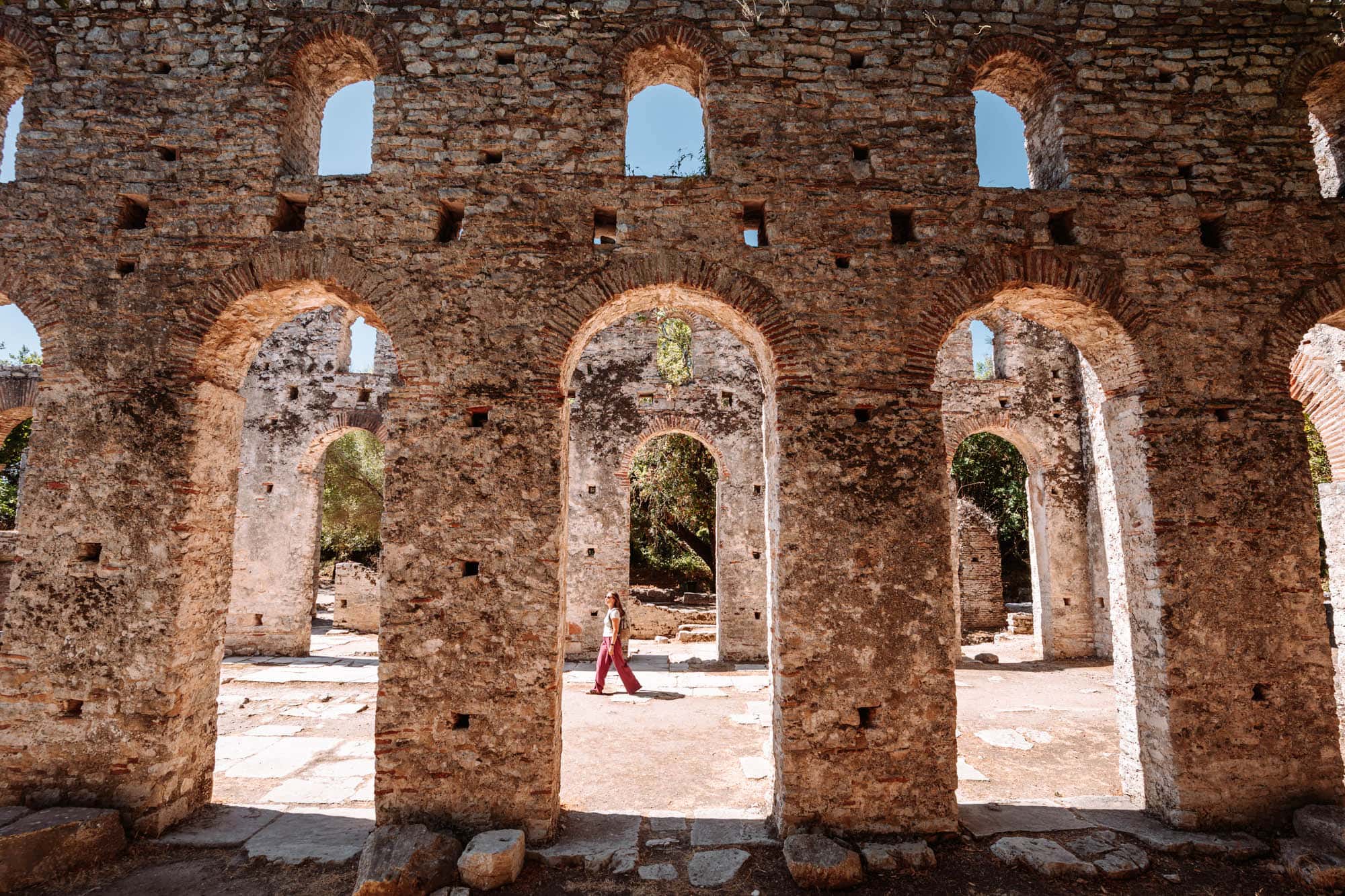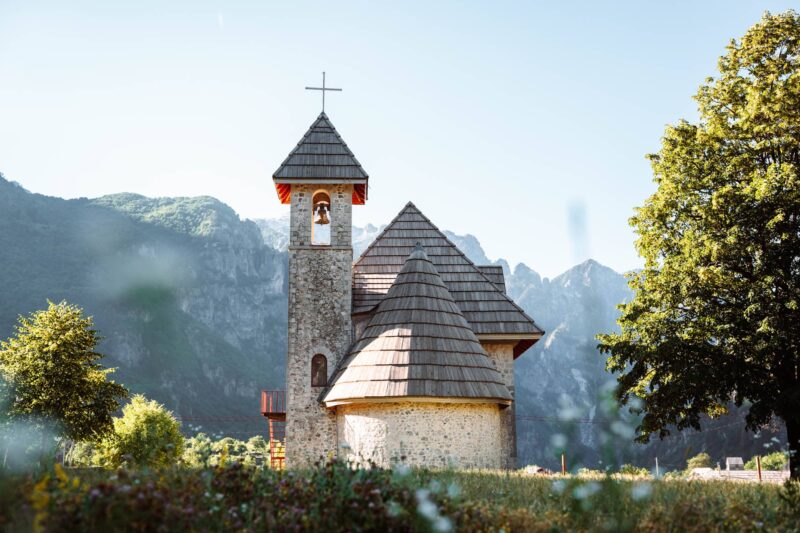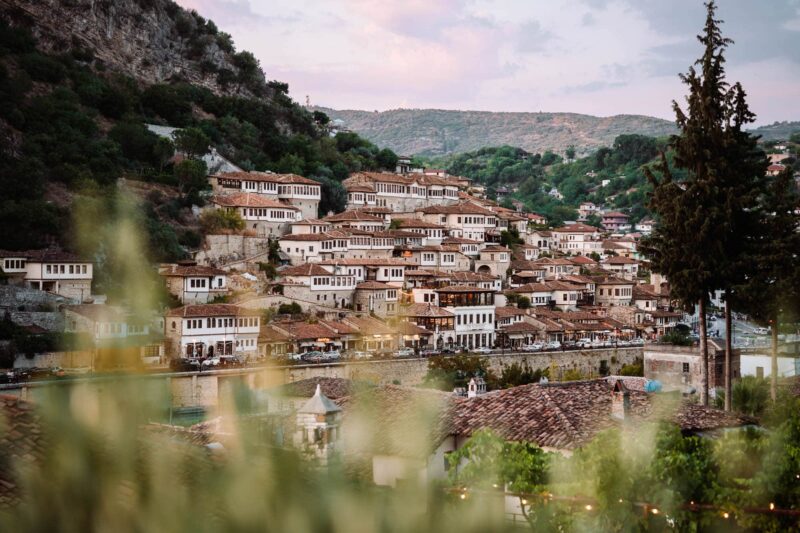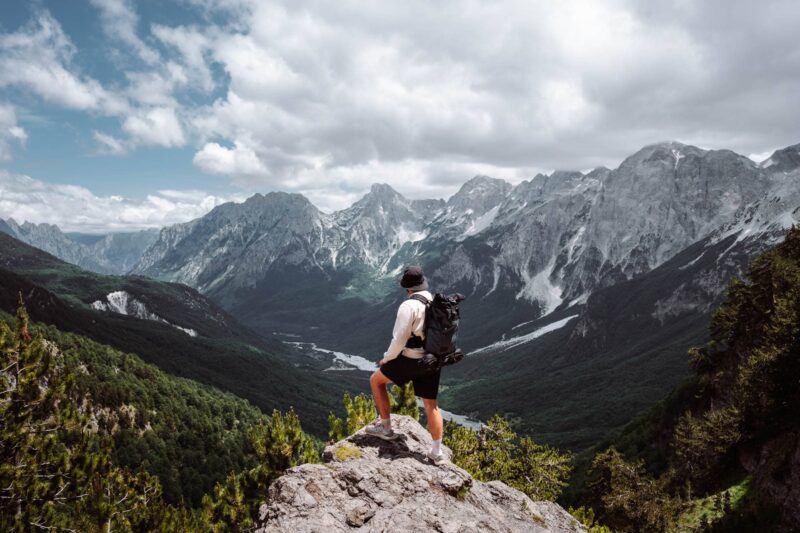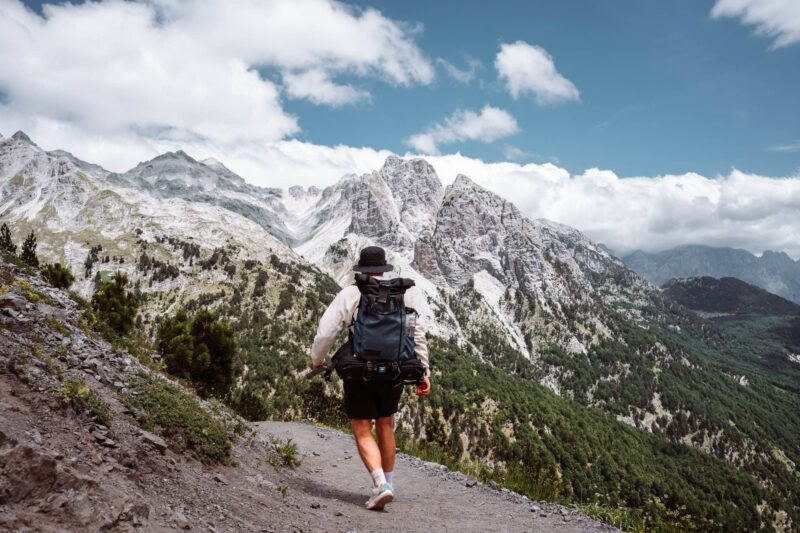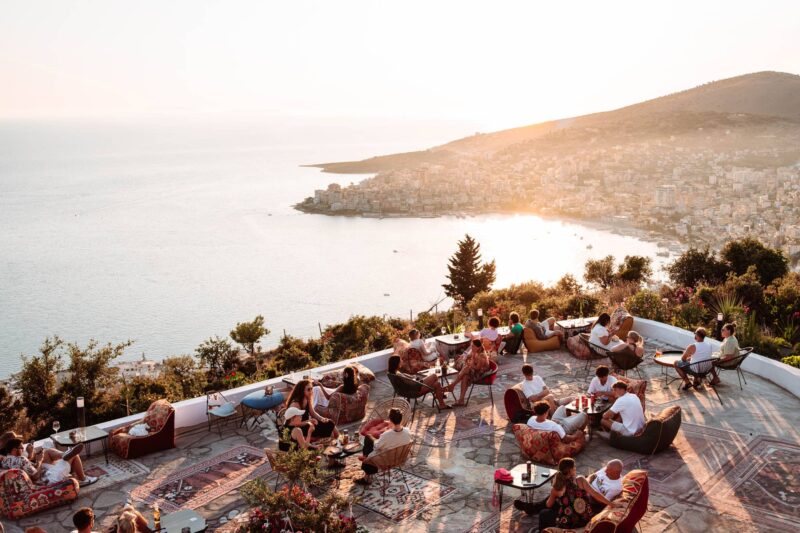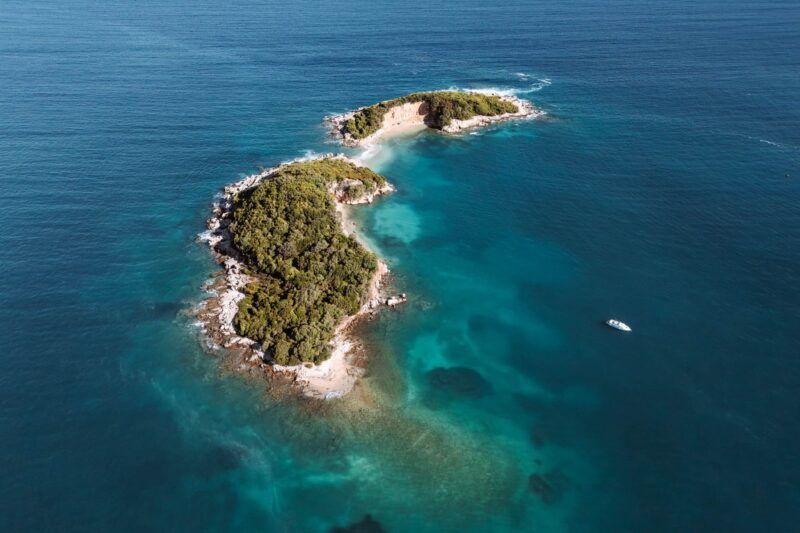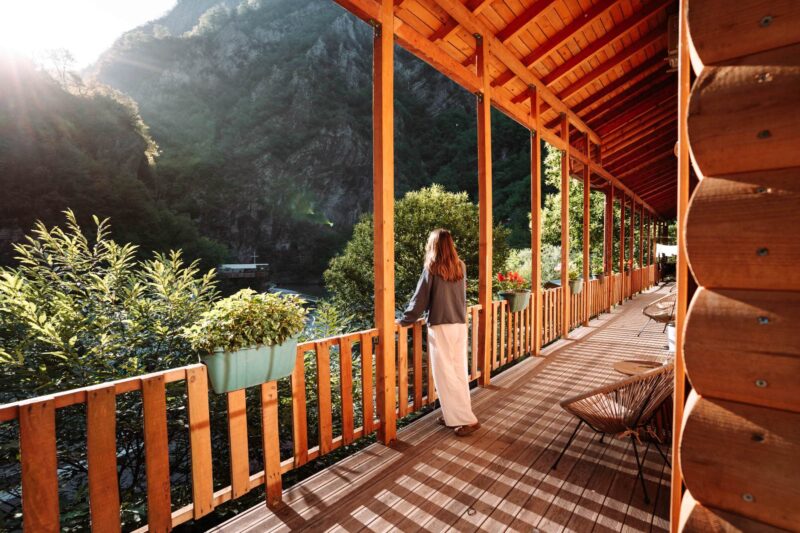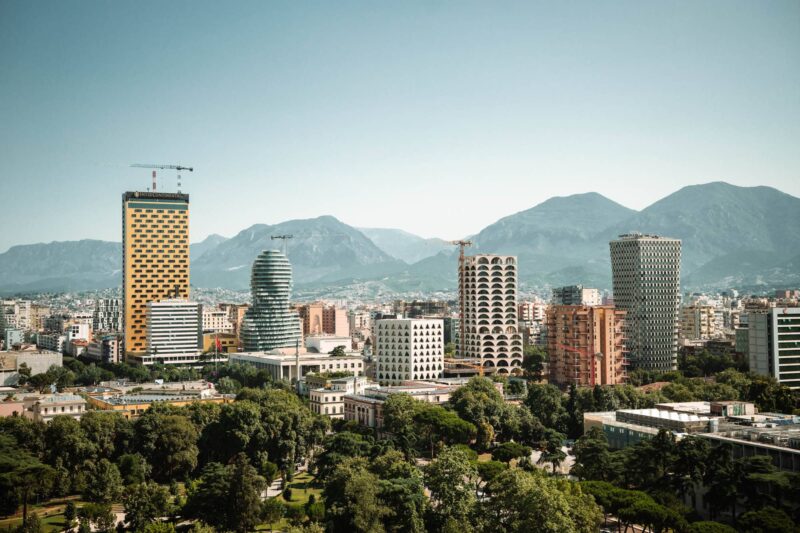Butrint National Park lies in the far south of Albania, close to the coastal towns of Ksamil and Sarandë, and it’s a place where nature and history meet. This ancient city was once inhabited by Greeks, Romans, Byzantines, and Venetians and still holds impressive remains of temples, bathhouses, churches, and an amphitheater. Surrounded by water and lush green landscapes, a visit to Butrint feels like a journey through time—an experience far beyond a typical museum stroll. As you wander through the ruins, you’ll hear the rustling of the trees and the gentle ripple of the water. It’s a place where history, peace, and nature come together seamlessly. In this article, you’ll discover the main highlights and plenty of tips for visiting Butrint National Park!
Why a visit to Butrint National Park is worth it
A visit to Butrint feels like stepping back in time. You’ll walk along ancient stone paths past temples, theaters, and city gates—all while enjoying stunning views over the lake and surrounding nature. Butrint isn’t just an archaeological site, it’s also a protected natural reserve. The wetlands are rich in flora and fauna and home to many bird species.
What makes Butrint special is that it wasn’t built by just one civilization, but by many. You’ll find remnants of Greek, Roman, Byzantine, and Venetian eras all in one place. It’s one of the best-preserved archaeological sites in Albania. The mix of rich history and untouched nature makes this an ideal place to wander slowly and fully immerse yourself in the past.

A brief history of Butrint National Park
The history of Butrint dates back to the 8th century BC. According to legend, the city was founded by refugees from Troy. Later, it became an important Greek colony and then a thriving Roman city. In the Middle Ages, it came under Byzantine and later Venetian rule.
Thanks to its strategic location along the channel and lake, Butrint played a key role in regional trade and defense. Eventually, the city fell into decline and was abandoned in the 19th century. Archaeological excavations began in the 20th century, uncovering many of the impressive structures still visible today.
Highlights of Butrint National Park
Butrint National Park is well laid out, and in about 1.5 to 2 hours you can walk past its main highlights. The beauty of this route is that in a short time, you’ll experience the complete history of this ancient city. Here are some of the most remarkable sites, listed in the chronological order of the walking route.
The Sanctuary of Asclepius
One of the oldest and most spiritual spots in Butrint is the Sanctuary of Asclepius, the Greek god of healing. In ancient times, people came here to make offerings and pray for good health. Though the temple is mostly in ruins, several columns, altars, and walls remain.

The Theater of Butrint
One of the highlights of your walk is the amphitheater of Butrint, built in the 3rd century BC. It once seated about 2,500 spectators and was used for plays, political meetings, and religious ceremonies. Because it’s so well preserved, the theater is still occasionally used today for small concerts.
The Agora and Roman Forum
At the heart of Butrint was the Agora, later transformed into the Roman Forum. This was the bustling center of city life and the main trading hub. While only ruins remain, you can still clearly see the structure and scale of the square.

The Triconch Palace
On the southern side of Butrint lies the Triconch Palace, dating back to the late Roman period. Its name comes from its three semicircular apses. It was once a luxurious residence, likely for an important official or cleric. Today, only the outlines remain, but you can imagine its grandeur.
The Basilica and Baptistery
These two structures date back to the Byzantine era and show how Butrint developed into a major religious center. The basilica is one of the largest early Christian churches in Albania, with impressive walls and arches. Though the roof is gone, you can still feel the scale of the structure.
Nearby is the baptistery, recognizable by its round shape and mosaic floor. The mosaic is usually covered with sand to protect it from the weather, but occasionally a small section is revealed for visitors to see.
Tip: When we visited Butrint, a small part of the mosaic was uncovered in the basilica. Keep your eyes open—you might get lucky too!

The Lion Gate
From the basilica, follow the path along the water and the outer walls of Butrint toward the Lion Gate. This gate was an important part of the city walls and once served as a main entrance. Above the archway, you’ll see a relief carving of a lion biting a bull—likely meant to intimidate enemies and symbolize the city’s power. Look closely, and you’ll still clearly see the bull.
The Venetian Castle and Museum
At the highest point of the park sits the Venetian castle, built in the 16th century during Venetian rule. Inside these historic walls is Butrint’s archaeological museum, where you’ll find statues, pottery, coins, and tools discovered during excavations. These artifacts illustrate the diverse cultures that shaped Butrint over the centuries.
The Acropolis of Butrint
On the hilltop, you’ll find the original acropolis, the founding site of Butrint before Greek colonization. From here, the city expanded toward the water. Today, you’ll see foundations and wall remnants, but the real highlight is the view: sweeping panoramas over the park, Lake Butrint, the Vivari Channel, and even Greece on clear days. A beautiful way to end your walk through this ancient city.
Where to stay when visiting Butrint National Park
Most visitors explore Butrint from the nearby coastal towns of Ksamil and Sarandë. Ksamil is just a 10-minute drive from the park and is a beloved beach destination thanks to its turquoise bays and sandy shores. Sarandë, the largest city in the region, is about 30 minutes from Butrint and offers a lively promenade, plenty of restaurants, shops, and beach clubs. The perfect choice for travelers who want to combine city, beach, and culture!
How to get to Butrint National Park
Butrint is easy to reach from both Ksamil and Sarandë, and there are several ways to get there.
By rental car
The most flexible way to reach Butrint is by rental car. From Ksamil it takes about 10 minutes, and from Sarandë around 30 minutes. The road is paved and in good condition. There’s a parking lot at the park entrance, but it fills up quickly as the day goes on. To guarantee a spot, go early.
By public transport
Butrint is also accessible by public transport. A minibus (furgon) runs regularly from the center of Sarandë via Ksamil to Butrint, stopping at several points along the main road. In high season, it runs about every 30 minutes; in low season, less frequently. Ask your accommodation for details on bus stops and schedules.
By day tour from Sarandë
Want to visit with a guide who can bring the ruins to life? With this day tour from Sarandë, you’ll explore not only Butrint National Park but also Lekuresi Castle, the Blue Eye, and Ksamil. Perfect if you want both historical context and a chance to see more of the region!
Practical tips for visiting Butrint National Park
- Avoid the crowds and heat — Butrint can get busy, especially in high season. To enjoy the park in peace (and secure parking), arrive early—around opening time at 8:30 AM. You’ll also beat the worst of the heat.
- Bring water and snacks — There are no cafés or restaurants inside the park. Carry enough water, especially on hot days, plus a snack or light lunch since you’ll be walking for about 1.5 to 2 hours.
- Take your time at the museum — Don’t skip the archaeological museum in the Venetian castle. Entry is included in your ticket, and it provides valuable context with artifacts that illustrate Butrint’s history. It’s the perfect way to wrap up your visit—especially if you’re exploring without a guide.
